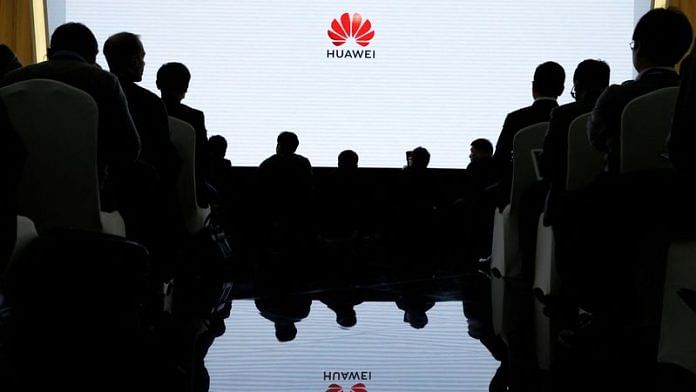As US Commerce Secretary Gina Raimondo touched down in Beijing on 3 September, Huawei seized the moment to unveil its latest 5G phone, the Huawei MATE60, powered by a cutting-edge new chip. This chip tells a story that embodies the ongoing geopolitical rivalry between the US and China.
The story of what Semiconductor Manufacturing International Corp (SMIC) has achieved with this new chip showcases Beijing’s resilience and determination to bounce back on the semiconductor stage.
The US has been taking steps to maintain its lead over Beijing by restricting access to advanced chips, driving China’s innovation engine. Advanced semiconductor chips are pivotal for the next generation of artificial intelligence technologies, which is one reason why the US has discouraged companies like NVIDIA from directly selling to Chinese firms.
China’s chip success story
Now, the analysis of the chip inside the Mate 60 Pro, commissioned by Bloomberg News and conducted by TechInsights, has generated nationalistic pride in China. It underscores the country’s capability to produce advanced semiconductor chips despite US-imposed restrictions.
Chinese Social media users taunted the visiting US Commerce Secretary by creating mock-ups of Raimondo endorsing Huawei’s phone. The hashtag “Take a photo of Raimondo with Huawei Mate 60 Pro” trended on Weibo following the phone’s launch, garnering over 290 million views.
Huawei Mate 60 Pro, powered by SMIC’s Kirin 9000s chip, is being hailed as a game-changer. TechInsights’ analysis reveals that the Kirin 9000s chip is a second-generation 7nm chip (N+2).
Priced at 7,000 yuan (Rs 79,634), Huawei sold as many as 800,000 units in the first five days, demonstrating considerable enthusiasm for the phone. Current estimates suggest Huawei might sell up to 20 million Mate 60 series phones, generating widespread interest.
The phone launch highlights the progress of China’s semiconductor industry even without EUV lithography tools, as noted by Dan Hutcheson, vice chair of TechInsights.
“The difficulty of this achievement also shows the resilience of the country’s chip technological ability. At the same time, it is a great geopolitical challenge to the countries that have sought to restrict their access to critical manufacturing technologies. The result may likely be even greater restrictions than today,” said Hutcheson.
The details of how SMIC managed to produce 7nm chips despite severe US-imposed restrictions are still shrouded in mystery.
Also read: Chinese economy won’t go bust but get caught in Japan-like limbo. It’s a test of Xi’s model
China’s statement to the US
The success of Huawei’s phone launch is being dubbed as a challenge to the US’s strategic objective of slowing down China’s economic growth. Advanced chips, especially those below 14nm, hold the key to determining who gains the upper hand in the field of geoeconomics.
The US introduced the CHIPS (Creating Helpful Incentives to Produce Semiconductors) and Science Act in August 2022, offering advanced semiconductor companies $52.7 billion in subsidies, with the condition that the funds cannot be used to invest in China. In October that year, the US imposed restrictions on semiconductor companies, preventing them from supplying logic chips under 16 nanometers (nm), DRAM chips below 18 nm, and NAND chips with 28 layers or more, without obtaining a licence. The US also persuaded the Netherlands to halt the sale of advanced lithography machines crucial for semiconductor manufacturing, particularly for producing chips as advanced as 5nm.
After these US restrictions, many had speculated that China’s semiconductor industry would struggle to recover. The US aimed to limit Chinese access to chips below 14nm, which were considered at least eight years behind the cutting-edge 3nm technology. However, with the breakthrough in 7nm chips, China has demonstrated its ability to address certain challenges related to producing state-of-the-art chips. This advancement positions China five years behind the current cutting-edge 3nm level, which the US is keen to keep out of Beijing’s reach.
While South Korea’s Samsung and Taiwan’s Taiwan Semiconductor Manufacturing Company race to develop even smaller nodes of chips at 2nm, Beijing may not be at the forefront of these cutting-edge technologies, but SMIC’s 7nm chip marks a significant stride forward.
Huawei proudly presents its new phone, the Mate 60 Pro, as a testament to its strategy to rebound from targeted US efforts to hobble its progress.
Huawei founder Ren Zhengfei has taken the US’s challenges to China’s growth seriously since the first round of sanctions in 2019. He has emphasised the importance of innovation in keeping Huawei ahead of its competitors in the 5G race.
“Huawei will save talent, not US dollars,” declared Ren in a speech delivered on 28 July. Ren believes in recruiting the best talent to maintain a competitive edge and innovate through the challenges posed by the US.
Ren’s journey is marked by achieving feats like the successful development of 7nm chips. However, the road ahead for Chinese companies to demonstrate the same technology in other equipment may not be as straightforward.
The innovation significantly enhances SMIC’s prospects for survival in a challenging geopolitical environment where the US is leveraging its might to impede China’s progress in artificial intelligence.
The semiconductor tussle is far from over as China seeks innovative ways to overcome the rut created by the US to slow down its companies. For now, SMIC and Huawei have demonstrated that the US’s national security agenda can be countered through their domestic ecosystem.
The author is a columnist and a freelance journalist. He was previously a China media journalist at the BBC World Service. He tweets @aadilbrar. Views are personal.
(Edited by Prashant)



